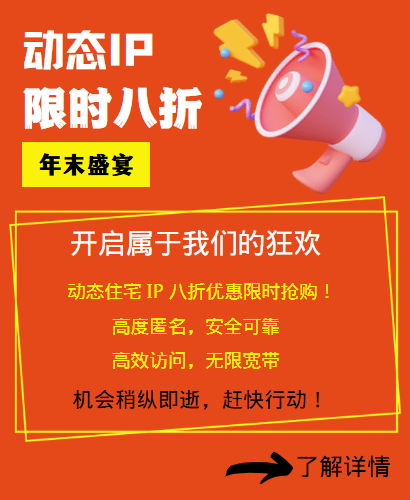In the global business environment, overseas social media platforms such as Facebook, Instagram, Twitter, LinkedIn and TikTok have become important positions for companies to expand international markets and enhance their brand's international influence. This article will deeply analyze how to effectively use these platforms to develop and implement efficient marketing strategies, and briefly mention the potential application of 98IP proxy (a tool for network access optimization) in specific scenarios.

I. In-depth insight into platform characteristics and precise layout
1. Facebook: the cornerstone of social networks
As the world's largest social media platform, Facebook has a wide user base and a highly interactive community. Brands should use Facebook for long-term brand building, and enhance brand awareness and user stickiness by publishing valuable content, organizing online activities, and participating in user discussions. At the same time, Facebook's advertising platform provides detailed target audience positioning options to help brands achieve precision marketing.
(II) Instagram: A window to a visual feast
Instagram attracts a large number of young users with its powerful visual expression and is an ideal platform for displaying product aesthetics, brand stories and lifestyles. Brands should focus on the creativity and beauty of content and use high-quality pictures and videos to attract user attention. In addition, Instagram's Story function and IGTV provide brands with a variety of content display formats, which helps to deepen user impressions.
(III) Twitter: A stage for real-time dialogue
Twitter is known for its immediacy and openness. It is an ideal place for brands to participate in hot topics, conduct crisis public relations and real-time interactions. Brands should pay close attention to industry trends and user feedback, publish relevant information in a timely manner, and establish instant communication channels with users. At the same time, using Twitter's trend function, brands can capture market hot spots and plan topic marketing.
(IV) LinkedIn: A bridge for professional networks
As a workplace social platform, LinkedIn brings together a large number of industry professionals and decision makers. Brands should use LinkedIn to showcase corporate strength, share industry insights, and publish recruitment information to establish a professional image and expand B2B business. In addition, LinkedIn's group function provides brands with opportunities for in-depth interaction with target audiences.
5. TikTok (International Edition): Leader of the Short Video Wave
TikTok has attracted young users around the world with its unique algorithm and creative content. Brands should keep up with platform trends, create creative short video content, participate in challenges, and cooperate with KOLs to attract the attention of young audiences. TikTok's algorithm recommendation mechanism enables high-quality content to spread quickly, bringing viral exposure to brands.
II. Strategy Formulation and Execution
1. Content is King, Creativity Wins
No matter which platform, high-quality content is always the key to attracting users and enhancing brand influence. Brands should have a deep understanding of the interests and needs of the target audience, and combine the characteristics of the platform to create creative and fascinating content. At the same time, maintain the frequency and consistency of content updates to maintain user attention and engagement.
2. Data Analysis, Precision Marketing
Using the data analysis tools provided by major social media platforms, brands can gain a deep understanding of user behavior, content performance and marketing effectiveness. Through data analysis, brands can optimize content strategies, adjust advertising placements, and improve marketing efficiency. At the same time, precision marketing based on user data can help brands achieve higher conversion rates and ROI.
(III) Cross-platform integration to create a brand ecosystem
Establish brand accounts on multiple social media platforms and integrate resources from each platform to form a brand ecosystem. Through cross-platform content sharing, event linkage and fan interaction, brands can expand their influence and improve user stickiness. At the same time, the complementary effects between different platforms help brands achieve more comprehensive marketing coverage.
III. Potential applications of 98IP agents
In overseas social media marketing, 98IP agents can be used to optimize the network access environment, especially in the face of geographical restrictions or unstable networks. Through 98IP agents, brands can simulate the network environment of the target market to ensure the smooth release of content and the accurate delivery of advertisements. In addition, when conducting market research and competitive product analysis, 98IP agents can also help brands obtain more accurate data information.
Conclusion
To master overseas social media marketing platforms, you need to have a deep understanding of the platform characteristics, formulate and implement efficient marketing strategies, focus on content innovation and data analysis, and make reasonable use of auxiliary tools such as 98IP proxy to optimize the network access environment. Through continuous efforts and innovation, brands can establish a strong brand influence on overseas social media platforms and achieve international market expansion and business growth.
Related Recommendations
- E-commerce price monitoring: dynamic residential IP enables 24-hour uninterrupted data capture
- Why does the same proxy IP pool have different effects?
- Optimize the TikTok experience: Use proxy IP to make Short Video smooth and unobstructed
- Do you need native IP to do cross-border e-commerce?
- Why choose residential IP agents to crawl Web data?
- Exclusive customization: Create an agent IP solution that meets your business needs
- What impact will the instability of overseas HTTP servers have? How to avoid it?
- Are the proxy IP and proxy server concepts the same?
- How to solve the network problem of cross-border office work?
- How to improve SEO website rankings and increase traffic?

